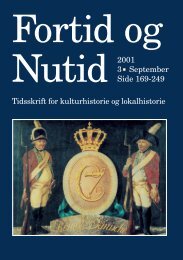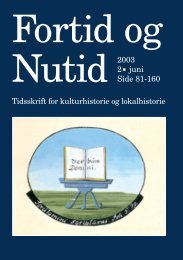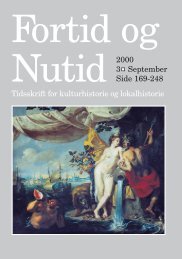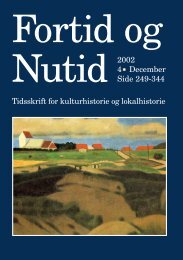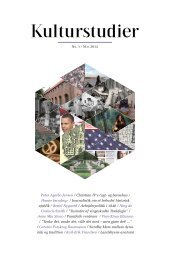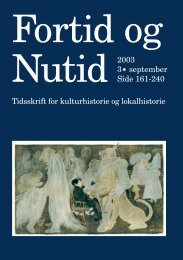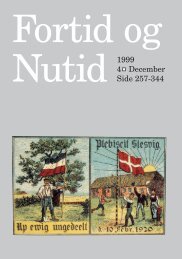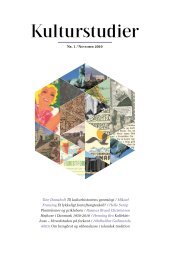Læs hele tidsskriftet (PDF) - Kulturstudier
Læs hele tidsskriftet (PDF) - Kulturstudier
Læs hele tidsskriftet (PDF) - Kulturstudier
You also want an ePaper? Increase the reach of your titles
YUMPU automatically turns print PDFs into web optimized ePapers that Google loves.
<strong>Kulturstudier</strong> Nr. 2, 2011 The reconfigured body 5/15<br />
nonhuman primates. Even though it was likely that it would be easier to use a<br />
kidney from a nonhuman primate than from a pig, though I have no evidence<br />
of that, we just felt that it was not ethically acceptable. There were several in<br />
our group who felt this way. It is difficult when you have human-like structures,<br />
so to speak”.<br />
Kristofer Hansson: “You talked about this at the beginning of the project”?<br />
Researcher: “Yes, we did. We talked about all sorts of animals. We read a<br />
lot about different kinds of animals and concluded that we would work with<br />
pigs.” 12<br />
The medical researcher in the interview refers to the fact that much of the discussion<br />
in Sweden at the beginning of the 1990s concerned the origin of the donor<br />
animal. This discussion focused upon nonhuman primates being too similar<br />
to humans. 13 The earlier donor animals, baboons and chimpanzees, were now<br />
seen as having too human-like a structure. In this way, the researchers projected<br />
human characteristics onto the nonhuman primates: the baboon and chimpanzee<br />
became anthropomorphized. 14 The human characteristic was categorized as<br />
closer to what had been distinguished and defined as nature in earlier xenotransplantation<br />
experiments. Not only was the relation between the two species<br />
discussed, but it also became impossible to use nonhuman primates in medical<br />
trials.<br />
During the discussion about the close links between humans and nonhuman<br />
primates, the dualism between human and pig was also more clearly identified.<br />
As donor animals, pigs were considered a better choice than primates, because<br />
they were not too similar to what was categorized as human. As pointed out<br />
by the medical researcher, it is an animal that we eat. In this way, there was a<br />
ranking between animals, where the nonhuman primates were ranked higher as<br />
well as closer to humans. Following the same line of reasoning, pigs were ranked<br />
lower. To be able to use the pig in biotechnological research it was important to<br />
categorize the animal as something less-than-human and to raise the question<br />
of where to allocate the difficult notion of humanness in relation to the various<br />
donor animals at hand for the researchers. 15<br />
Among researchers and in the media, this categorization of pigs was something<br />
often discussed from the perspective that pigs were already being reared for meat<br />
12 The interviews were conducted at the researcher’s workplace, and a tape recorder was used (Interview:<br />
02.03.2010).<br />
13 Other problems with using nonhuman primates were that they cannot be bred fast enough, and that they<br />
are an endangered species.<br />
14 Löfgren 1985.<br />
15 Butler 2004.<br />
146



